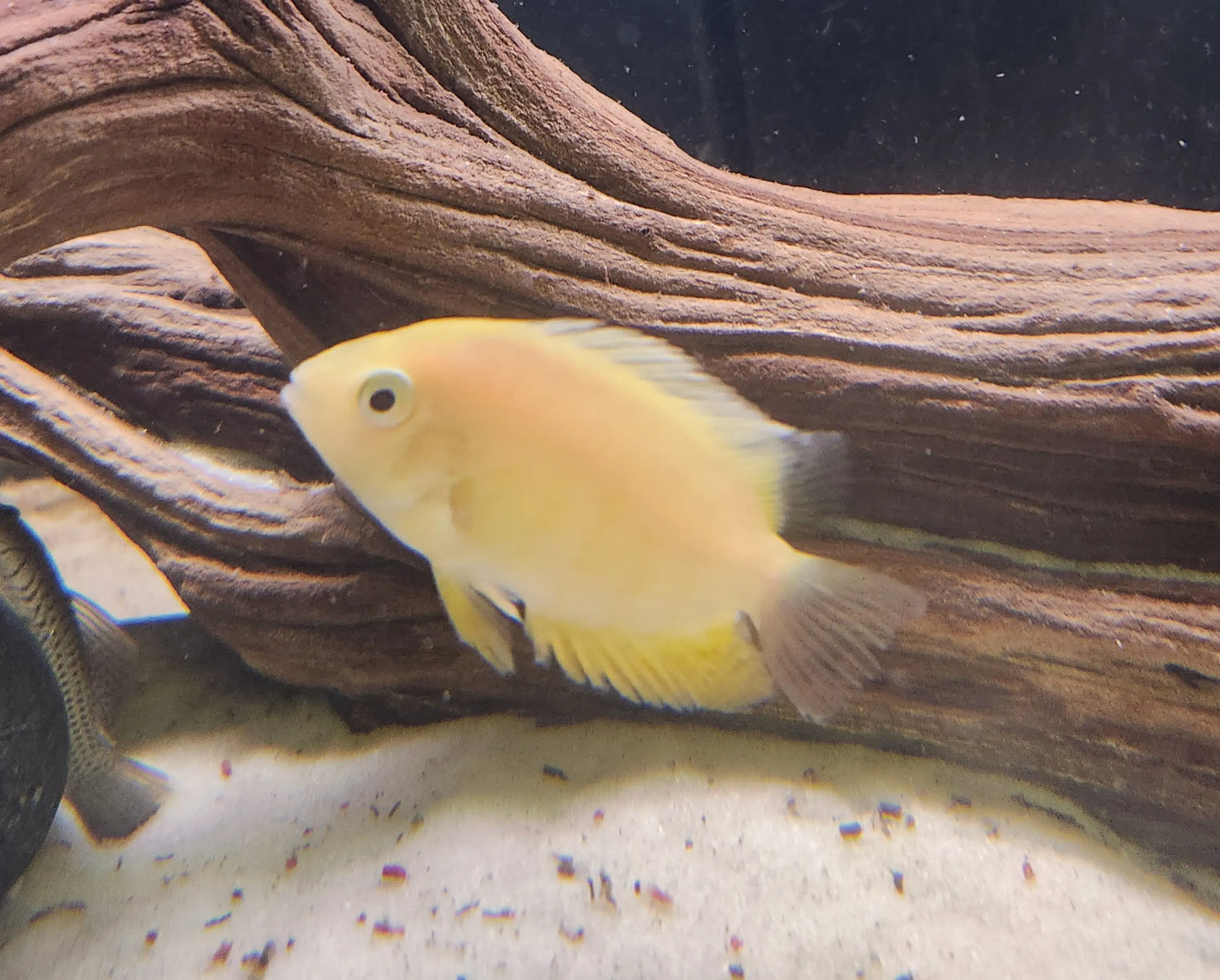Gold Severum Cichlid (Heros efasciatus) – Peaceful Golden South American Cichlid
Gold Severum Cichlid (Heros efasciatus) – Peaceful Golden South American Cichlid
Low stock: 2 left
Couldn't load pickup availability
🟡 Gold Severum Cichlid (Heros efasciatus) – Peaceful Golden South American Cichlid
The Gold Severum Cichlid is a stunning color morph of Heros efasciatus, beloved for its solid golden-yellow body, soft orange accents, and calm, personable temperament. Often referred to as the “gentle giant” of medium-sized cichlids, the Gold Severum is peaceful, intelligent, and makes a beautiful centerpiece fish for larger freshwater aquariums.
Perfect for semi-peaceful cichlid communities or planted tanks with hardy species, this Severum brings warm, radiant color and elegant movement to any setup.
🌟 Key Features
🟡 Rich Golden Body Color – Bright, warm yellow with soft orange tones
🌿 Peaceful & Community-Friendly – Calmer than most cichlids
🐠 Ideal Centerpiece Fish – Graceful swimmer with big personality
✨ Great for Semi-Planted Tanks – Works well with sturdy plants
🧠 Highly Intelligent – Interacts with keepers and learns routines
⚙️ Care Guide
- Scientific Name: Heros efasciatus
- Common Name: Gold Severum
- Temperament: Semi-peaceful
- Adult Size: 7–8 inches
- Diet: Omnivore – pellets, flakes, spirulina, veggies, frozen foods
- Tank Size: 55 gallons minimum
- Water Temperature: 75–82°F
- pH Range: 6.0–7.5
- Lifespan: 8–10 years
💡 Tank Setup Tips
- Use driftwood, rocks, and hardy plants like Anubias, Java fern, or potted swords.
- Maintain clean water and strong filtration—Severums appreciate stability.
- Avoid small schooling fish or shrimp, which may be eaten.
- Great tankmates include:
- Keyhole Cichlids
- Angelfish
- Peaceful Geophagus
- Silver Dollars
- Rainbowfish
❓ FAQ
Q: Are Gold Severums aggressive?
A: They are one of the calmer cichlids—mild territorial behavior is possible during breeding.
Q: Are they good for planted tanks?
A: Yes, with hardy or potted plants; they may nibble soft species.
Q: Do they pair easily?
A: Yes—they often form monogamous breeding pairs.
Q: How big do they get?
A: Typically 7–8 inches in aquariums.

